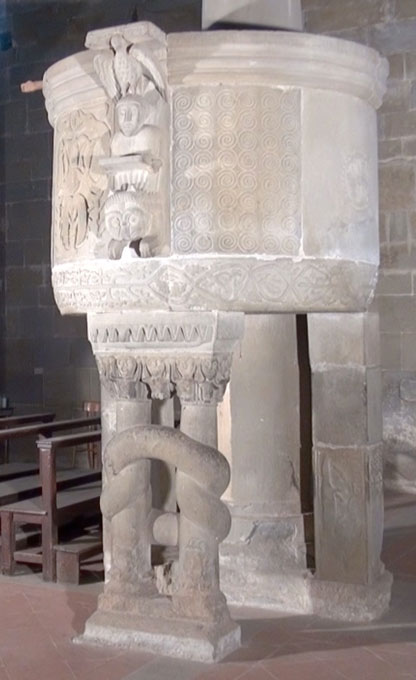THE PULPIT
Romanesque architects were not insensitive to the most beautiful object in the Lombard church, and so were to decide to keep it and install it in the new pieve. This was the stone pulpit, which originally rested on the railing that enclosed the area of the presbytery, on the right side of the principal nave called in cornu epistulae. In fact we can still see that its back portion rests on stone blocks, materials retrieved and reused from the previous church, sculpted in bas-relief with spiral motifs, rosettes and a very eroded animal figure that perhaps were part of the external decoration of the pieve. The presbytery zone of the Lombard church was separated from that of the worshippers by three steps, still visible in its right nave, and by a stone balustrade probably of smooth panels separated by pilasters, as in other Italian examples. The back portion of the pulpit rested on this balustrade, while the rest was supported by a base that remains today. It is not certain whether the various parts that were separated and reassembled for the Romanesque pieve, remain in their original disposition.
The pulpit was at the beginning interpreted stylistically as a primitive, “barbarous”, Romanesque work. In 1987, Mario Bucci was the first to realize that it belonged to the Lombard culture without completely abandoning its place in the barbarian setting: actually the so-called “barbarian” art, which generally includes that of the invaders into Italy, was once considered to be the expression of artistic and cultural decadence; whereas today it is recognized that we owe the invention of new techniques and aesthetic canons to the “barbarians”, who departed intentionally from the classical ideal of the beautiful and from its proportions, in order to draw from a language where the fantastic and the symbolic unite with imagination and colour in an original vision of the world.

